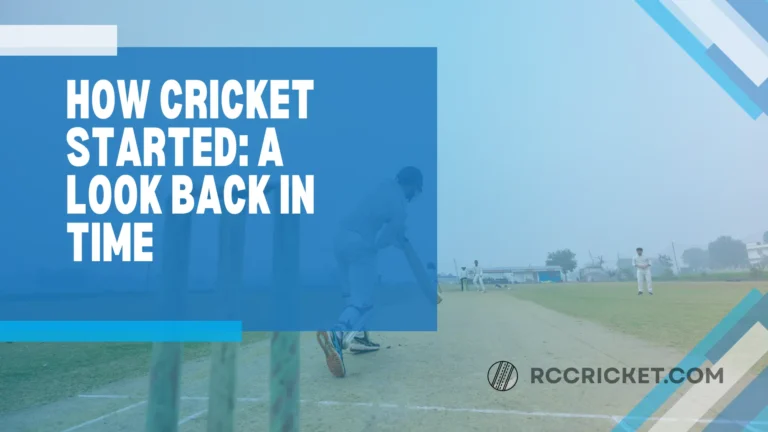What is LBW in Cricket? Full Meaning, Rule and Easy Explanation
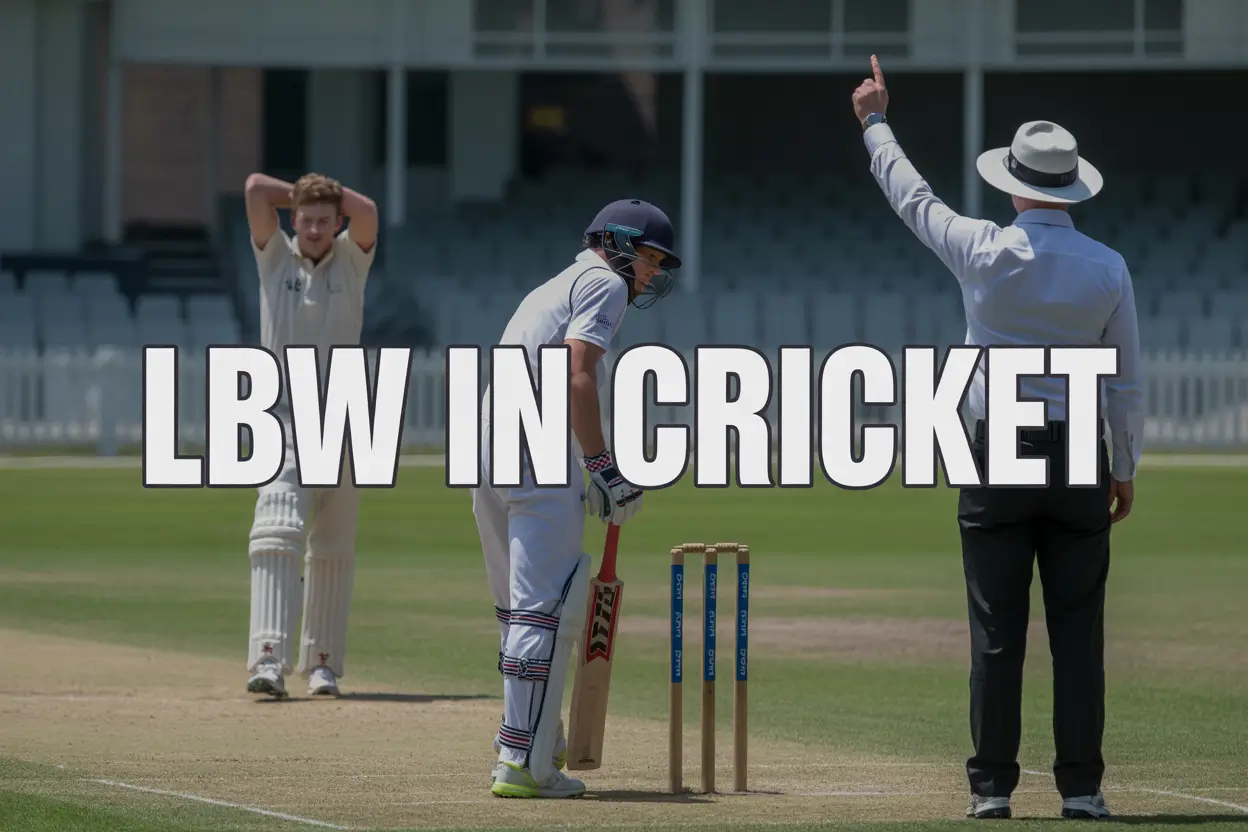
What is LBW in Cricket?
LBW stands for “Leg Before Wicket” – one of cricket’s most debated and complex dismissal methods. This guide breaks down everything new cricket fans and casual viewers need to know about this tricky rule that often leaves spectators scratching their heads.
You’ll discover the basic definition and core conditions that make an LBW decision valid. We’ll also explore the key factors umpires weigh when making these split-second calls, plus how modern technology like ball-tracking has changed the game. By the end, you’ll understand why LBW decisions spark so much discussion and controversy in cricket matches.
Understanding the Basic Definition of LBW
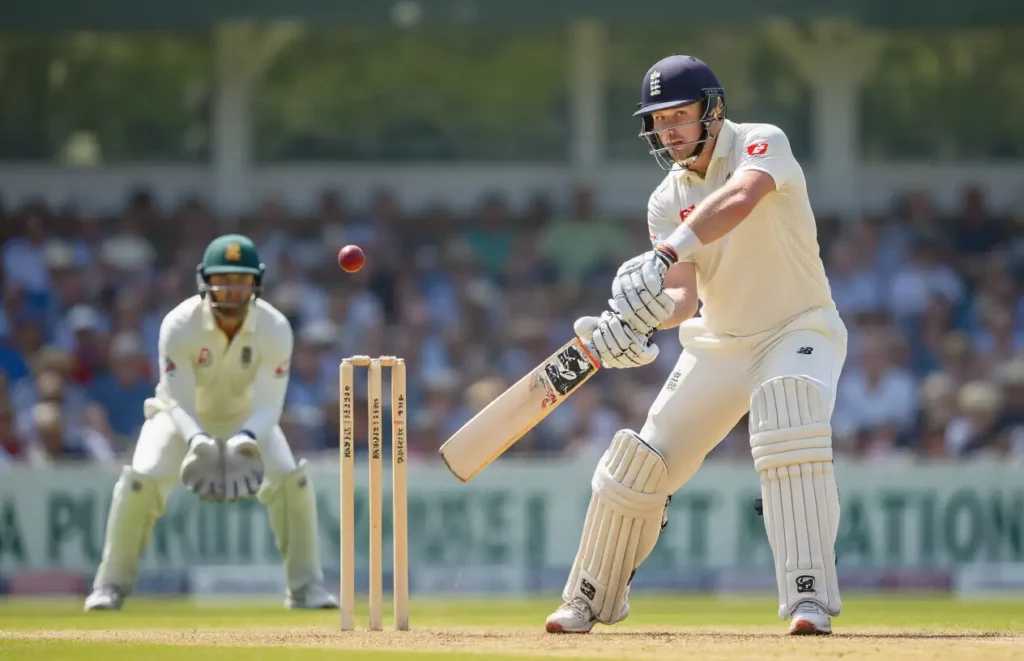
What LBW Stands for and Its Literal Meaning
LBW stands for “Leg Before Wicket,” one of cricket’s most talked-about dismissal methods. The term breaks down quite simply: when a batsman’s leg (or any part of their body) comes between the ball and the wicket, potentially preventing what would have been a legitimate delivery from hitting the stumps. The word “before” here means “in front of” – so essentially, the batsman’s body is positioned in front of the wicket when the ball would otherwise have hit it.
This literal interpretation gives you the basic picture, but cricket being cricket, the actual application involves much more complexity than the name suggests.
Core Concept of Leg Before Wicket Dismissal
The fundamental idea behind LBW centers on fairness between bat and ball. Cricket’s essence lies in the contest between the bowler trying to hit the stumps and the batsman defending them with their bat. When a batsman uses their body instead of their bat to stop the ball from hitting the wickets, they’re essentially gaining an unfair advantage.
The dismissal occurs when the ball hits the batsman’s body (typically the pads) and the umpire judges that the ball would have gone on to hit the stumps if the batsman’s body hadn’t been in the way. This creates a fascinating dynamic where batsmen must be extremely careful about their positioning and shot selection, especially when playing defensive strokes or getting caught on the crease.
Why This Rule Exists in Cricket
The LBW rule exists to maintain the fundamental balance of cricket. Without it, batsmen could simply stand in front of their stumps and use their bodies as shields, completely negating the bowler’s primary objective. This would transform cricket from a game of skill with bat and ball into something entirely different.
The rule also encourages proper batting technique. Batsmen must use their bat to play shots and defend their wickets, rather than relying on body positioning. This promotes the artistry and skill that makes cricket beautiful to watch – the elegant drives, the precise defensive shots, and the quick footwork that defines quality batsmanship.
Cricket’s lawmakers recognized early on that allowing batsmen to deliberately pad away deliveries would fundamentally break the game’s competitive spirit and reduce the bowler’s role significantly.
Position of LBW Among Cricket’s Dismissal Methods
Among cricket’s ten methods of dismissal, LBW ranks as one of the most common, sitting alongside bowled, caught, and run out as the primary ways batsmen lose their wickets. Statistics show that LBW accounts for roughly 15-20% of all dismissals in international cricket, making it a crucial aspect of the game that every player and fan should understand.
| Dismissal Method | Approximate Frequency | Key Feature |
|---|---|---|
| Caught | 40-45% | Most common dismissal |
| Bowled | 20-25% | Direct hit on stumps |
| LBW | 15-20% | Body intercepting ball path |
| Run Out | 8-12% | Fails to complete run |
What makes LBW unique among these dismissals is that it requires judgment rather than just observation. While a catch or bowled dismissal is usually clear-cut, LBW decisions involve the umpire making complex assessments about ball trajectory, impact points, and whether the ball would have hit the stumps.
Essential Conditions for LBW Dismissal
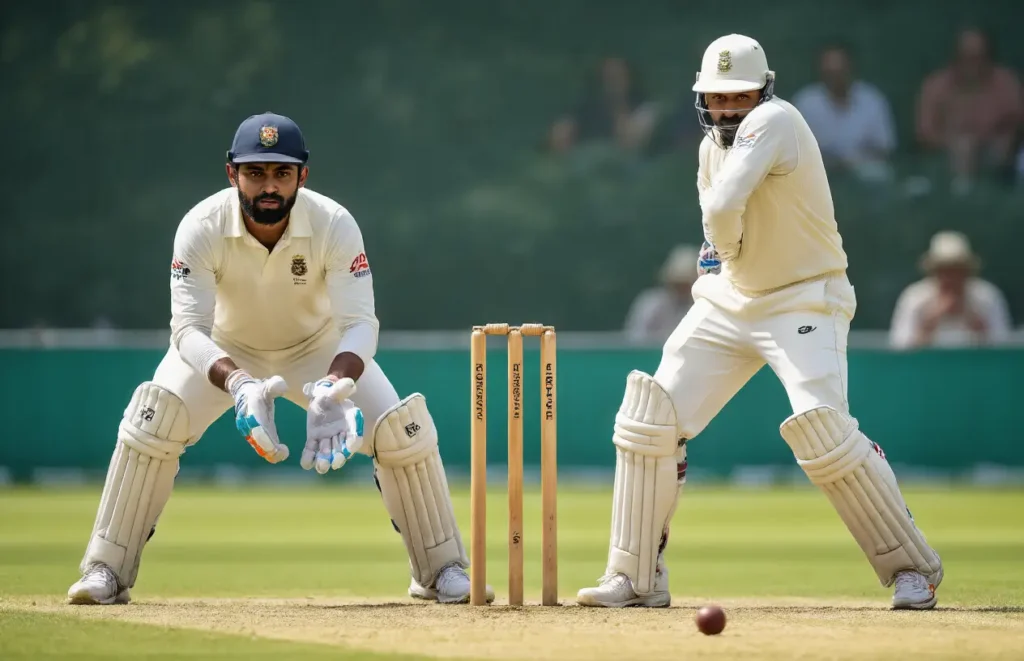
Ball must hit the batsman’s leg or body first
The fundamental principle of LBW revolves around the ball making contact with the batsman’s leg or any part of their body before hitting the wickets. This contact must occur without the ball first touching the bat or glove. When a bowler delivers the ball and it strikes the batsman’s pad, thigh, or any other body part directly, the first condition for a potential LBW dismissal is satisfied.
The key here is the sequence of contact. If the ball clips the bat’s edge even slightly before hitting the pad, the LBW appeal becomes invalid. Umpires listen carefully for any sound that might indicate bat-first contact, and modern technology like Ultra Edge helps detect even the faintest touches. The ball can hit multiple parts of the body during its trajectory, but as long as it doesn’t touch the bat first, this condition remains fulfilled.
Wickets must be the ball’s intended target
For an LBW dismissal to be valid, the ball must be traveling in a direction that would hit the stumps if the batsman’s body wasn’t in the way. This doesn’t mean the ball needs to be perfectly straight – it can be angling toward the stumps or even spinning toward them. The crucial factor is whether the ball’s path, when projected forward, intersects with any part of the three stumps.
Umpires visualize this trajectory by considering the ball’s line, length, and any deviation caused by spin or swing. A ball pitching outside leg stump but straightening enough to hit the stumps can still result in an LBW dismissal. Similarly, a ball that’s spinning sharply from outside off stump but would curve back to hit the wickets meets this condition.
Impact point requirements on the pitch
The location where the ball hits the batsman plays a critical role in LBW decisions. The impact must occur either in line with the stumps or outside the off stump. If the ball strikes the batsman’s pad outside the leg stump (from the batsman’s perspective), no LBW can be given, regardless of where the ball might have gone afterward.
When the impact occurs outside the off stump, an additional rule applies: the batsman must not be making a genuine attempt to play the ball. If they’re clearly trying to hit the ball with their bat but miss, and the impact is outside off stump, they cannot be given out LBW. However, if they’re padding up deliberately or not attempting a shot, they can still be dismissed even with impact outside off stump, provided the ball would have hit the wickets.
The “in line” judgment considers an imaginary corridor running from the center of the stumps toward the bowler. Impact within this corridor typically results in straightforward LBW decisions, while impact outside requires more complex considerations about the batsman’s intent and shot selection.
Key Factors Umpires Consider When Making LBW Decisions

Line of the Ball Delivery and Impact Zone
The line of delivery forms the foundation of every LBW decision. Umpires carefully track where the ball pitches and its path toward the stumps. When a ball pitches outside leg stump, the batsman cannot be given out LBW, regardless of where it hits the pad or where it’s heading. This rule protects batsmen from balls angling in from wide positions.
The impact zone – where the ball strikes the batsman’s pad – proves equally crucial. If the ball hits the pad outside the line of off stump while the batsman attempts a shot, the appeal gets rejected. However, if the batsman doesn’t offer a shot, impact outside off stump can still result in dismissal, provided the ball would hit the stumps.
Umpires mentally draw an imaginary line from the ball’s pitching point to the stumps, constantly assessing whether the delivery stays within legal boundaries for potential dismissal.
Height Trajectory and Bounce Predictions
Predicting where the ball would travel after hitting the pad requires exceptional judgment. Umpires consider the ball’s trajectory, pace, and bounce characteristics when determining if it would clear the stumps or hit them.
Fast bowlers generating extra bounce often see appeals rejected when the ball strikes high on the pad, especially against tall batsmen. Conversely, slower deliveries or those keeping low increase dismissal chances. The wicket’s nature plays a significant role – bouncy pitches favor bowlers less for LBW appeals compared to low, slow surfaces.
Umpires also factor in the batsman’s height and stance. A batsman crouching low might be more vulnerable to deliveries that would pass over stumps against someone standing upright.
Whether the Batsman Was Playing a Shot
Shot offering dramatically influences LBW decisions. When batsmen attempt genuine shots, they receive protection from deliveries impacting outside off stump. The key word here is “genuine” – half-hearted prods or token movements don’t qualify as shot attempts.
Umpires look for clear intent: forward movement, bat coming down in a playing motion, and obvious attempt to make contact. Padded-up defensive pushes, sweeps, cuts, and drives all count as shot attempts. However, shouldering arms, padding away, or simply standing still provide no such protection.
The distinction becomes crucial for balls pitching in line but impacting outside off stump. With a shot offered, the batsman stays safe. Without shot attempt, dismissal becomes possible if the ball would hit the stumps.
Distance Between Impact and Stumps
The gap between where the ball hits the pad and the stumps influences umpire confidence levels. Closer impacts make predictions easier and more reliable, while distant impacts introduce uncertainty about the ball’s continued path.
When the ball travels a long distance after pad contact, factors like deviation, spin, and pace changes become harder to judge accurately. Umpires tend to favor batsmen in these marginal situations, following cricket’s tradition of giving doubt to the batting side.
Balls hitting the pad right in front of the stumps, especially middle stump, typically result in successful appeals when other conditions align. The shorter the distance for projection, the more confident umpires feel about their decisions.
Common LBW Scenarios Every Cricket Fan Should Know
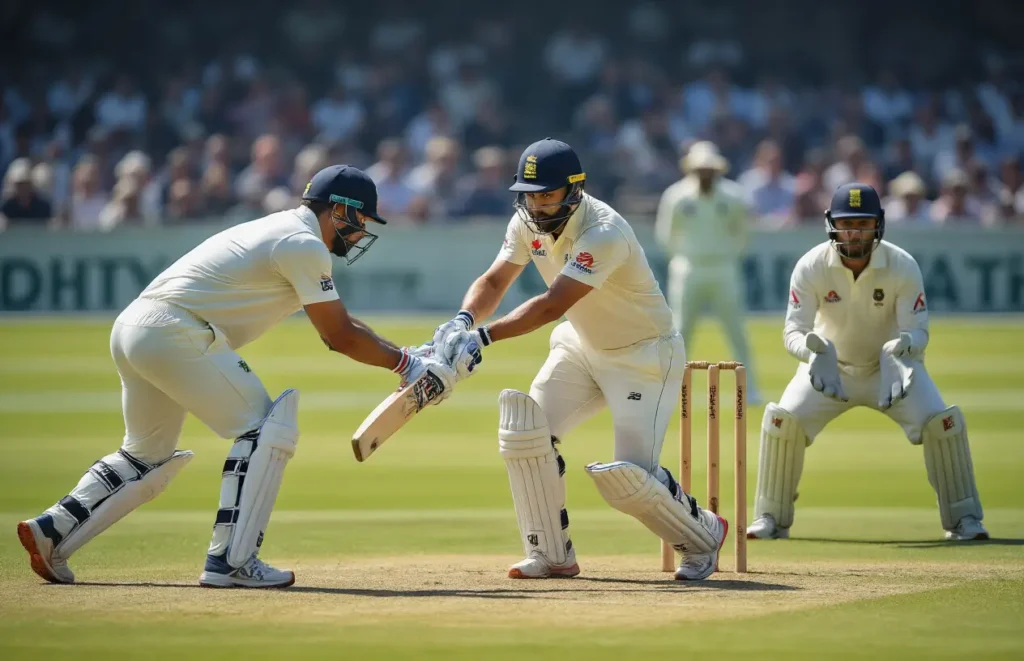
Straight deliveries hitting pads in line
Picture this: a fast bowler charges in, delivers a perfectly straight ball, and the batsman misses it completely. The ball crashes into the pads right in front of the stumps. This is cricket’s most straightforward LBW scenario, and probably the one that gets crowds on their feet screaming “Howzat!”
When a delivery comes straight down the pitch without any swing or seam movement, umpires have a clear view of the ball’s trajectory. If the batsman plays and misses, or gets caught on the crease without offering a shot, the decision becomes relatively simple. The ball needs to hit the pad in line with the stumps and be heading toward the wickets.
Fast bowlers love these situations because they can bowl at good pace, keeping the ball full and straight. Batsmen who get stuck on the crease or play across the line become sitting ducks. The key for batters is getting their front foot to the pitch of the ball or ensuring their bat comes down in the right line.
Spin bowling LBW traps and techniques
Spin bowlers are the master craftsmen of LBW dismissals. They don’t just bowl and hope – they set elaborate traps that unfold over several deliveries. Off-spinners targeting right-handed batsmen will often bowl a series of balls that turn away from the bat, then suddenly deliver one that goes straight on or turns less. The batsman, expecting the ball to spin away, plays for the turn and gets trapped in front.
Left-arm spinners have their own bag of tricks. They’ll bowl around the wicket to right-handers, angling the ball in and spinning it away from the bat. When batsmen push forward uncertainly, they often end up playing outside the line while the ball hits the pad.
Leg-spinners create havoc with their variations. A googly that turns back into a right-handed batsman can catch them completely off guard. The batsman plays for the leg-spin, but the ball turns the other way and hits the pad in front of the stumps.
The beauty of spin bowling LBW dismissals lies in the mental game. Spinners build pressure through dot balls, force batsmen into defensive positions, then strike when the batter’s footwork becomes hesitant.
Fast bowling yorkers and full tosses
Fast bowlers hunting LBW dismissals often target the base of the stumps with pinpoint yorkers. These deliveries arrive at such pace and so close to the batsman’s feet that even a slight misjudgment can result in the ball hitting the pad before the bat comes down.
The yorker LBW works because batsmen struggle to get their bat down in time. Even if they make contact, the bat might not reach the ball before it clips the pad. Umpires watch carefully for any pad-first contact in these situations.
Full tosses present a different challenge. While they might seem easier to handle, a well-directed full toss at pace can surprise batsmen. If the ball arrives higher than expected and the batsman misses their shot, they’re vulnerable to LBW if the ball would have hit the stumps.
Reverse swing adds another dimension to fast bowling LBW dismissals. When the ball moves late in the air, batsmen can be completely deceived. They might plant their front foot expecting the ball to come straight, only to find it swinging back in sharply and hitting the pad.
The most dangerous fast bowling LBW scenarios occur when bowlers mix up their lengths and pace while maintaining accuracy. A quick yorker after a series of good-length deliveries can catch batsmen completely unprepared.
Technology’s Role in Modern LBW Decisions
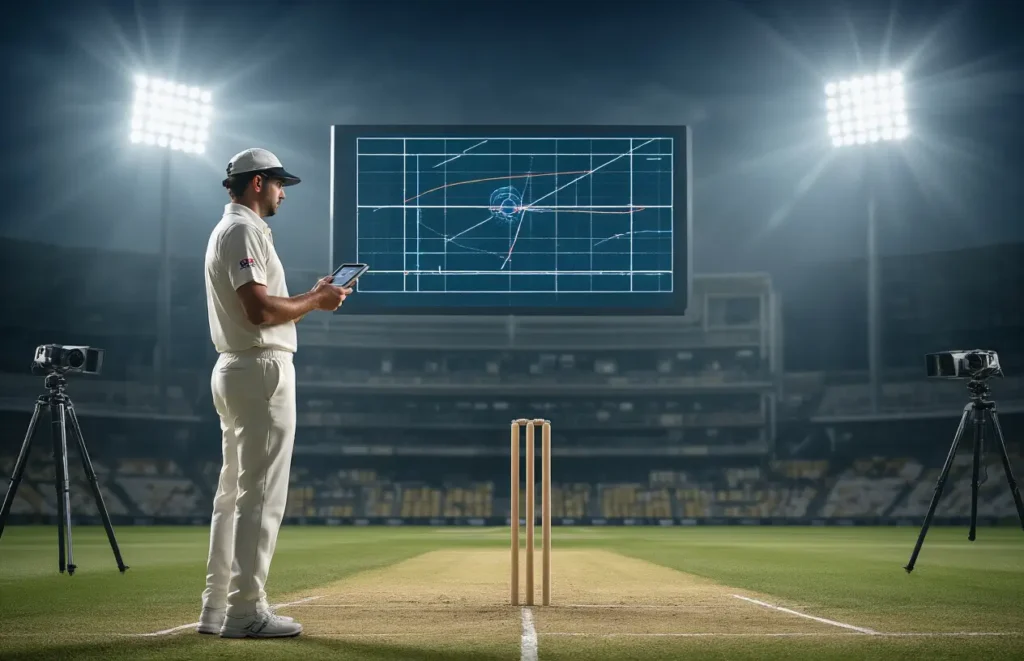
How Ball Tracking Systems Work
Ball tracking technology uses multiple high-speed cameras positioned around the cricket ground to capture the trajectory of the ball from the moment it leaves the bowler’s hand. These cameras, typically six to eight in number, record the ball’s movement at incredibly fast frame rates, creating a detailed three-dimensional picture of its path.
The system calculates where the ball pitched, its angle of impact with the pad, and most importantly, predicts where the ball would have gone if the batsman’s leg hadn’t interrupted its journey. Advanced algorithms analyze factors like the ball’s speed, spin, and swing to create this projection. The technology can track the ball even when it’s partially obscured by the batsman or stumps.
Companies like Hawk-Eye have perfected this technology to provide accuracy within millimeters. The system processes all this data in real-time, generating the familiar ball-tracking graphics that show the ball’s actual path in red and its predicted path in yellow or blue.
Decision Review System Impact on LBW Calls
The Decision Review System has completely transformed how LBW decisions are made and contested in modern cricket. Before DRS, batsmen and bowlers had to accept the on-field umpire’s decision, regardless of whether it appeared correct to television viewers or players.
Now, teams can challenge LBW decisions they believe are incorrect, leading to more accurate outcomes. The system has revealed that even experienced umpires make mistakes – studies show that around 5-8% of LBW decisions are overturned when reviewed. This has made the game fairer, especially for touring teams who might face unconscious bias from home umpires.
The psychological impact is equally significant. Batsmen are more likely to review LBW decisions they believe are wrong, while bowlers have gained confidence knowing that genuine dismissals won’t be missed due to human error. The system has also made umpires more cautious about giving batsmen out LBW when the ball is hitting the stumps marginally.
Umpire’s Call Margins and Technology Limitations
The concept of “umpire’s call” exists because ball-tracking technology, despite its sophistication, has inherent limitations. The system has a margin of error of approximately 3.6mm, which might seem tiny but can be crucial when determining whether a ball is clipping the stumps or missing them entirely.
When less than 50% of the ball is predicted to hit the stumps, or when the impact point is marginal for line decisions, the system defers to the on-field umpire’s original decision. This protects the human element of the game while acknowledging technology’s boundaries.
The margins work as follows:
- Pitching: If the ball pitches more than 3 meters from the stumps, the prediction becomes less reliable
- Impact: The system must be certain about where the ball hit the pad relative to the stumps
- Wickets hitting: At least 50% of the ball must be predicted to hit the stumps for a definitive “out” call
Comparing Traditional Umpiring with Modern Assistance
Traditional umpiring relied entirely on the naked eye and split-second decision-making. Umpires had to judge complex trajectories, account for swing and spin, and make calls in real-time without the luxury of slow-motion replays. The best umpires developed an almost supernatural ability to read the game, but even they were human and made errors.
Modern umpiring combines human judgment with technological precision. Umpires still make the initial decision based on their experience and instinct, but they know that obviously incorrect calls can be corrected through DRS. This has actually improved on-field decision-making, as umpires feel more confident making tough calls.
| Aspect | Traditional Umpiring | Modern Assisted Umpiring |
|---|---|---|
| Accuracy Rate | 92-95% | 96-98% |
| Appeal Process | Final decision | Can be reviewed |
| Pressure on Umpires | Very high | Reduced |
| Game Flow | Continuous | Occasional delays for reviews |
| Player Satisfaction | Mixed | Generally higher |
The technology has made cricket more precise while preserving the game’s essential character. Players and fans now have greater confidence in crucial decisions, making the sport more fair and enjoyable for everyone involved.
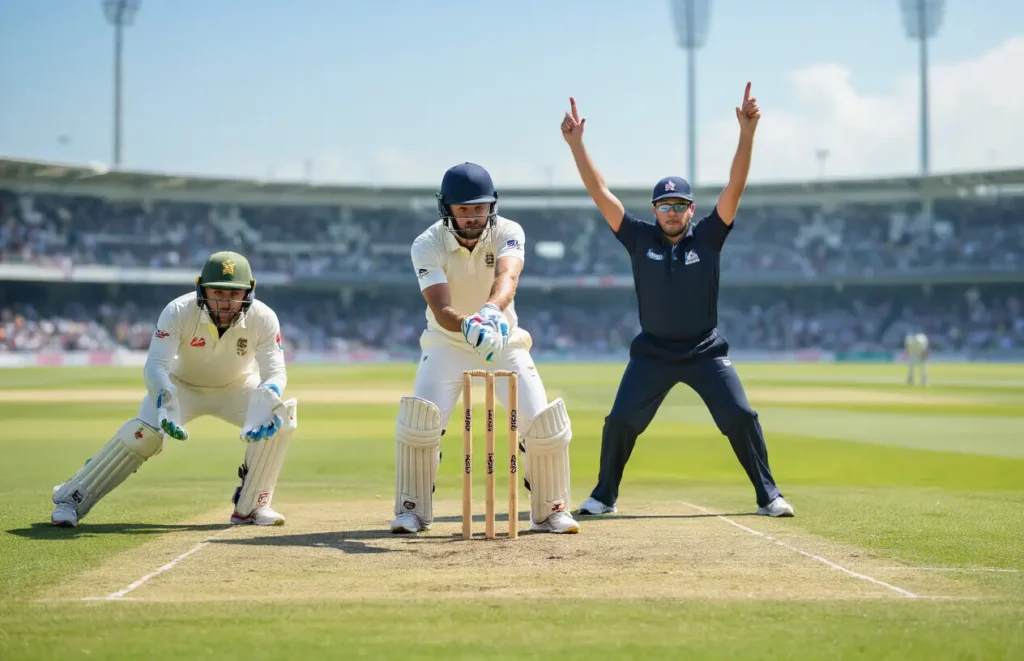
LBW dismissals represent some of the most complex yet fascinating moments in cricket. The rule brings together multiple elements – ball trajectory, impact points, and predicted paths – that umpires must assess in split seconds. Modern technology has certainly made these decisions more accurate, but the fundamental principles remain the same as they were decades ago.
Cricket fans who grasp the basics of LBW will find themselves enjoying matches on a deeper level. You’ll start noticing the subtle angles, the strategic bowling lines, and why batsmen position themselves certain ways. Next time you’re watching a match and see an LBW appeal, you’ll have the knowledge to make your own judgment call – just like the umpires do.

